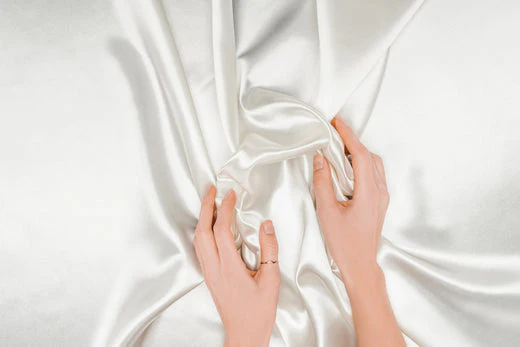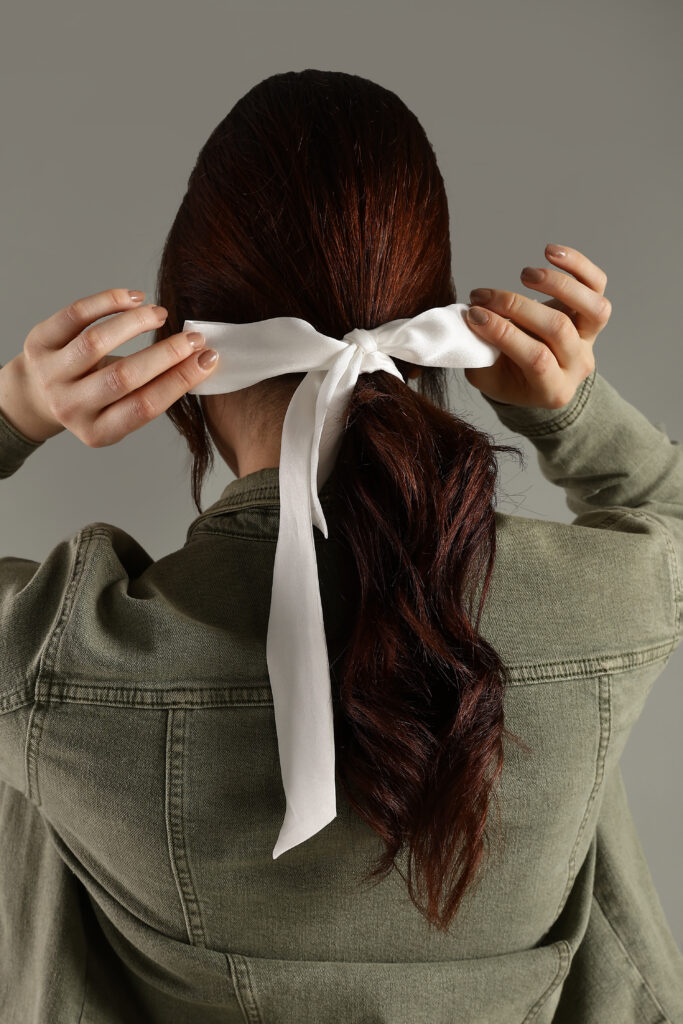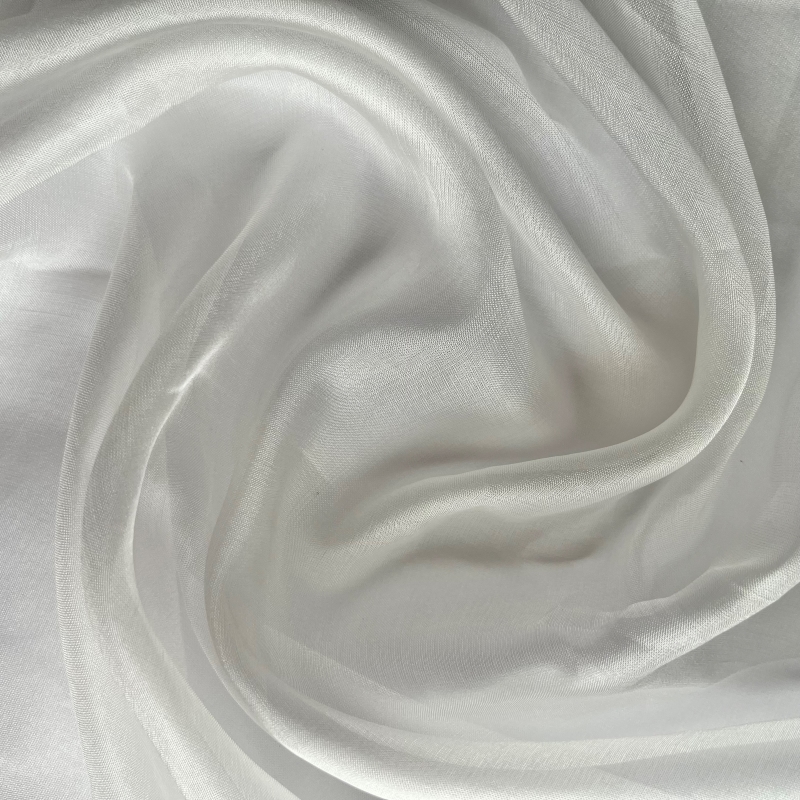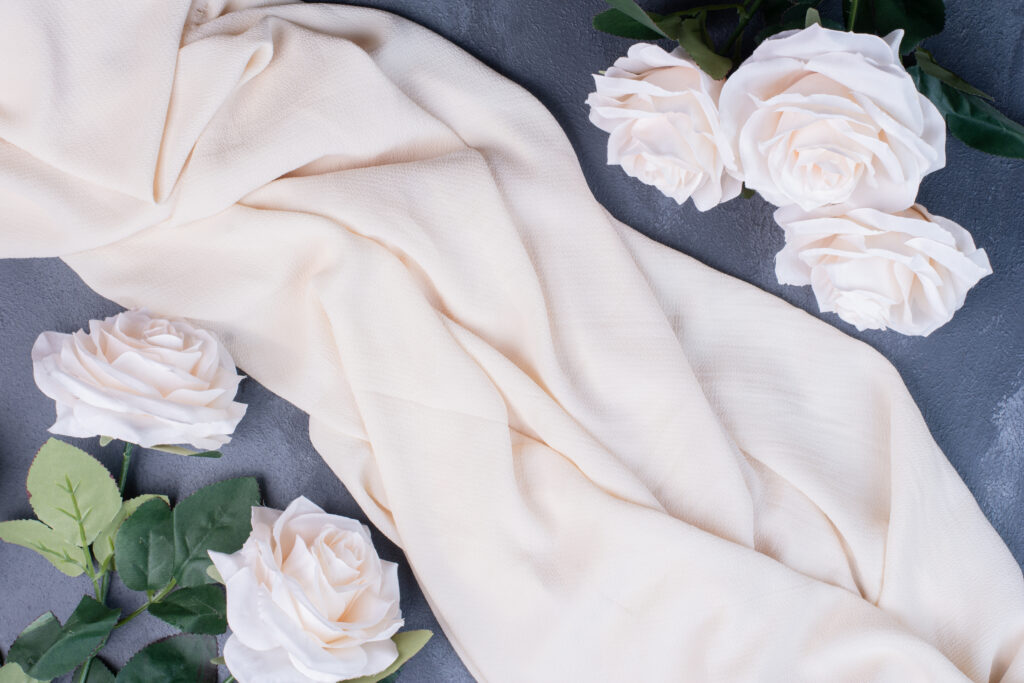Silk is a symbol of refinement and quality, but all silks are not the same. Mulberry silk is the finest and most luxurious type of silk, known for being more refined than other varieties. In this article, we will discuss mulberry silk, including various benefits and the differences between silk varieties.
Mulberry silk meaning
Mulberry silk is produced by cocoons of the Bombyx mori silkworms. These silkworms are fed only mulberry leaves, which is how the silk gets its name. Mulberry silk accounts for about 90% of global silk production, making it the most common and widely used type of silk. The threads are stronger, softer, and more consistent than other types of silk.
China is the largest producer of mulberry silk, accounting for about 80% of global production. India follows as the second-largest, contributing approximately 18%.
Benefits of mulberry silk
Skin benefits

Mulberry silk fabric is generally considered good for skin due to its rich antioxidant and anti-inflammatory properties. For instance, a mulberry silk bandana, scarves, and silk squares are incredibly smooth and soft while helping to keep your skin calm and comfortable. It is free from irritation and redness while being gentle on your skin. The fabric has exceptional properties, such as thermoregulation—it keeps you cool in hot weather and warm on chilly days.
Similarly, most of the fabrics tend to absorb moisture from your skin, which can leave your skin feeling dry. Mulberry silk is completely different. Sleeping on a silk pillowcase made from 100% mulberry silk provides the best natural care for your skin and hair. They do not absorb moisture from your skin, helping to maintain moisture balance and keep your skin hydrated and healthy.
Hair benefits
Mulberry silk products are gentle on the hair. Using silk accessories, such as a silk ribbon or silk scrunchie, can help reduce friction, breakage, frizz, and split ends. The smooth and soft texture of silk helps the hair to glide effortlessly without pulling or tugging.
Compared to many traditional bands, silk products hold hair securely without causing creases. The smooth texture of silk gives a beautiful and shiny look. Moreover, it helps maintain the hair’s natural oils, so your hair will be naturally hydrated throughout the day.

Healthier and hypoallergenic

Silk is naturally hypoallergenic and resistant to dust mites, mold, and mildew. It is an excellent choice for people with sensitive skin, allergies, or respiratory issues. The smooth surface of silk does not trap dust, pollen, or other allergens.
Some manufacturers still treat silk with harmful chemicals and dyes, but at Green Tailor, you will get 100% natural mulberry silk fabrics and products. These materials have a more breathable nature, keeping your skin fresh, clean, and comfortable throughout the day. It’s fair to say then that silk has gained a reputation as a hypoallergenic fabric, and for good reason.
Biological benefits
Mulberry silk is a natural fiber made from proteins, like fibroin and sericin, amino acids found in common with your skin and hair. Because of this close similarity to your body’s biology, silk has been used in medicine for thousands of years.
Silk threads were traditionally used as surgical sutures, and today, silk is being explored in advanced medical fields, such as bandages made from it to protect open wounds and facilitate the tissue repair process.

Environmental benefits

Mulberry silk offers several environmental benefits. It is a natural and renewable material with a low carbon footprint compared to synthetic textiles. It is completely biodegradable, breaking down in soil within months and leaving no harmful residues behind.
Compared to other textile manufacturing processes, the production of mulberry silk requires less water. Mulberry trees are drought-resistant, reducing the need for excessive irrigation. So, this attribute makes mulberry silk a water-efficient choice.
Difference between silk and mulberry silk
| Feature | Mulberry Silk | Silk |
|---|---|---|
| Source | Mulberry silk comes from silkworms fed only mulberry leaves | The regular silk can come from various silkworms or wild sources |
| Color & Appearance | Naturally white and shiny | May be off-white, brownish, or yellowish |
| Quality | Considered the highest quality silk | Ranges from low to high |
| Cost | More expensive due to its purity and production process | Often less expensive |
| Texture | Extremely smooth, soft, and buttery in texture | Slightly rougher compared to mulberry silk |
End note
Mulberry silk is the finest and most luxurious type of silk you can choose. Whether you are buying fabric for clothing, bedding, or accessories, it is a smart choice for anyone who values quality, comfort, and sustainability.
If you’re looking for mulberry silk or other natural fabrics, Green Tailor offers 100% mulberry silk fabrics and products that are kind to both you and the planet. We supply all our natural collections worldwide with no MOQ.
For more information, contact us at [email protected].
